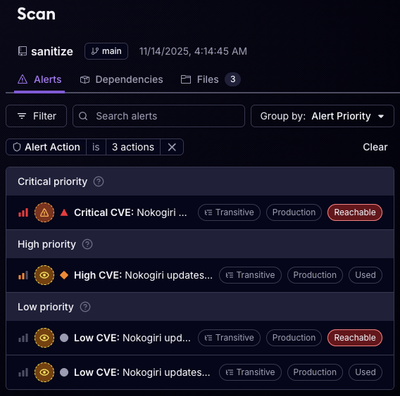
Product
Reachability for Ruby Now in Beta
Reachability analysis for Ruby is now in beta, helping teams identify which vulnerabilities are truly exploitable in their applications.
@eslint/github-action
Advanced tools
This GitHub Action is designed to run ESLint on a pull request and leave comments on any issues found.
In order to use this action, your project must have ESLint configured to run within your project. That means you must have a package.json file that specifies the version of eslint to use and any shareable configs that your project relies on.
First, create an npm script called eslint:github-action in your package.json file. This script should run ESLint on all of the files that should be linted on a pull request. The script must include the -f compact option, which outputs ESLint results in JSON format. This is important for the action to understand the ESLint results. Here's an example script:
{
"scripts": {
"eslint:github-action": "eslint src/"
}
}
Note: Do not include the -f flag in your script. The ESLint GitHub Action relies on the default stylish ESLint formatter to find and annotate errors.
You can also add in any additional command line arguments to ESLint in the eslint:github-action script so that ESLint runs exactly the way you want it to.
Next, you'll need to create GitHub Actions workflow file to use this action, such as:
name: Run ESLint on Pull Requests
on:
- pull_request
jobs:
build:
name: Run ESLint
runs-on: ubuntu-latest
steps:
# Check out the repository
- uses: actions/checkout@v1
# Install Node.js
- uses: actions/setup-node@v1
with:
node-version: 12
# Install your dependencies
- run: npm ci
# Run ESLint
- uses: eslint/github-action@v0
master - ongoing development. You should not use this branch in your GitHub workflows because it will not work (no dependencies checked in).draft - a draft of the next release. This may be unstable and also should not be used in your GitHub workflows. This branch is automatically created whenever code is committed to master.eslint:github-action npm script?Different projects use ESLint in different ways, and it's not possible to come up with a single configuration that would work correctly for every project. You may be using certain command line flags, ignoring certain files, or using tools that call ESLint. The best way to know how your project uses ESLint is for you to tell us by creating a script that the GitHub Action uses.
eslint:github-action npm script need to lint all of my files?ESLint command line flags like --ext alter the files that ESLint lints. If you are using eslint-plugin-markdown, for example, then you might want ESLint to run on files ending with .md. Rather than trying to guess which files in a pull request might want linting applied, it's easier for you to create a script that does exactly what you want. The GitHub Action can then pull the appropriate information out of the results to report them.
GitHub executes the src/github-action.js file. That file, in turn, calls npx @eslint/github-action, using the version number found in package.json, to execute the logic. By publishing the GitHub Action to npm and then running it with npx, we avoid the need to check dependencies into the repository.
FAQs
Run ESLint on GitHub pull requests
We found that @eslint/github-action demonstrated a not healthy version release cadence and project activity because the last version was released a year ago. It has 5 open source maintainers collaborating on the project.
Did you know?

Socket for GitHub automatically highlights issues in each pull request and monitors the health of all your open source dependencies. Discover the contents of your packages and block harmful activity before you install or update your dependencies.

Product
Reachability analysis for Ruby is now in beta, helping teams identify which vulnerabilities are truly exploitable in their applications.

Research
/Security News
Malicious npm packages use Adspect cloaking and fake CAPTCHAs to fingerprint visitors and redirect victims to crypto-themed scam sites.

Security News
Recent coverage mislabels the latest TEA protocol spam as a worm. Here’s what’s actually happening.